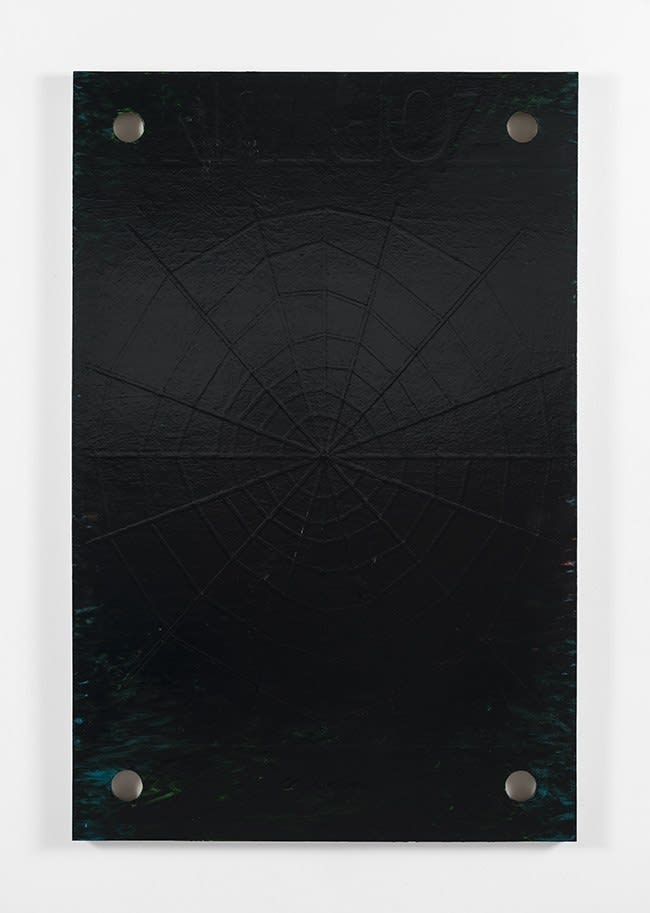The last show I was able to see in person was Michael Rey’s most recent selection of sleek monochrome paintings at Philip Martin Gallery. Like his earlier works, made with oil and plasticine clay, these paintings on strangely shaped panels are made by molding the surfaces with his fingers and slowly spreading the paint in a meditative manner. The gradual progressions and transitions within each work, and his practice in general, recall the studio moves of methodical modernists like Ellsworth Kelly, Robert Mangold, and Brice Marden. But Rey’s works are moodier and more intuitive than most of his antecedents. There is some spunk and funk to the forms—and some dark, irascible energy to some of them, too—but they are also quite self-restrained; they never seem to go off the deep end.
Yet, in the weeks since I saw Rey’s newest paintings (all works 2020), as the United States has scrambled to soften the harsh effects of a global pandemic, it’s felt as though we have collectively gone off the deep end, and my interpretation of the work has somewhat shifted. Before, these paintings appeared to be more about art—cleverly and coyly functioning in their own sophisticated milieu. Now, they feel much more sincere and vulnerable, just like the way that real-life concerns now dramatically overshadow the niche concerns of the art world.
The long, skinny, anatomical “Yavy-Yavy” immediately calls to mind a spine, further referencing both the fragility of art and life, but also the backbone required to create and care for art and life. The slightly raised spiderweb on the deep, shiny black “ZOPTUN (Astrolopico)” feels like a metaphor for the insidious structures that our economy is built on, which ensnare and prey upon us. Within this context, the hole in each of the piece’s four corners might point out the flaws of capitalism, and the green peeking through the black paint might expose the natural greed of the predators within these systems. It’s possible I’m reading too much into this painting, but it’s hard not to enter such a bleak zone when the candidate who has clearly fought the hardest for all Americans was just snubbed for the second time in fewer than five years. Perhaps the most profound piece of the lot is “Klodafhass,” a stretched-out, creamy, sterile composition—its shape a bizarre amalgamation resembling a butterfly, clocks, scissors, and telephone receivers all collapsed into one smooth plane—expressing the suppressed or suffocated emotions of an emergency room, regardless of the day’s hour.
Abstraction has long been seen as a blank slate onto which we are supposedly able to project our own ideas or values. I would argue that abstract art is actually most useful when it operates more like a window, through which the viewer can see another person’s ideas and values and respond accordingly. In the midst of this crisis, where we’re all stuck in homes or hospitals for the foreseeable future, Rey’s open-ended works likely hit too close to home; through their subjectivity, they project our worst fears back to us. Maybe we could all use some literal and figurative windows these days.






